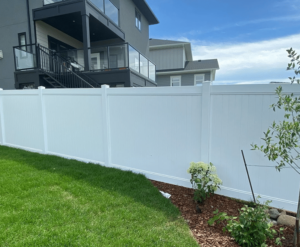
If you own a farm or other rural property in Alberta, a fence can help you mark its boundaries as well as ensuring that you and your livestock are secure.
Fences for this purpose are usually major projects that require specific expertise in acreage fencing.
With the climate here in Alberta, local expertise is the way to go. It’s important to get the materials, the design, and the installation right as mistakes could be expensive.
You can start with a little homework on the various types of farm fencing available. Following is an overview of the fence types you might consider when safeguarding cattle farms, horse farms, and other rural properties in Alberta.
Table of Contents
ToggleMain considerations
There are over ten styles of farm fence available. Deciding which fence to employ can, therefore, be a challenge.
Consider the following key factors in your decision:
– Budget – large-scale fencing projects can be expensive
– Strength and durability – will your fence face damage from cattle and the elements?
– How do you want your fence to look? Is appearance important?
– The importance of security and privacy to your decision
What is the best fencing for cattle?
Fencing for cattle needs to be sturdy and strong.
Cattle will often rub against perimeter fencing, which can quickly wear your fence. That, plus the elements in Alberta, can age a fence and reduce its lifespan unless you choose wisely.
Some of the best types of fencing that suit cattle farms include:
Barbed wire fencing
Barbed wire fencing is ideal for cattle pastures and enclosures. Thick, galvanized barbed wire will live up to the battering it gets from our weather and discourage cattle from rubbing against it.
It is cost-effective, needs minimal maintenance, and is effective as an entire fence or installed on top of a chain-link fence for extra security.
High-tensile wire fencing
A high-tensile wire fence is made of smooth wire pulled at very high tension and supported by heavy posts. This provides great strength and durability and it is difficult for cattle to breach.
Another benefit of high-tensile wire fencing is that the optional addition of electrical wires can prevent livestock from repetitively pushing against it.
Post & rail/post & plank fencing
Horizontal post and rail fencing is also an ideal type of fence for pastures and safe paddocks.
The traditional style of this fence uses wooden posts and planks. An alternative is to use posts and rails made of galvanized steel, which adds extra strength.
Vinyl is another alternative to traditional wood for the rails. This again adds durability to the fence.
Split cedar fencing
Split cedar fencing looks attractive but is a more expensive option when considering the high volumes usually required for fencing on cattle farms.
Cedar is very low maintenance, rot-resistant, environmentally friendly, strong enough to handle cattle, and ideal for the climate.
What fencing is best for horses?
The most popular fencing for horses is made of wire, posts and rails, high tensile wire or split cedar.
You have already read about these types of fences above.
Of those mentioned, high-tensile wire fencing is often preferred by horse owners for their paddocks and pastures because of its great strength and safety.
Another possible type of fence to consider for horses is page wire fencing. This consists of galvanized wire knotted or welded into rectangles to create a continuous mesh connected to natural cedar, treated wood or steel posts.
This type of fence is very durable, with mesh sizes, spacing and heights all highly customizable depending on purpose and usage.
How high should a fence be for horses?
Horse fencing needs to be high. Unlike cattle, horses have quite a leap on them, as we know.
In general, a horse fence should be at least 4.5 feet high – preferably 5 feet or higher if large stallions are present.
The top fence rail should obviously be high enough to prevent the horse leaping over but should allow them to put their heads over the fence comfortably.
How far apart should farm fence posts be?
Space your fence posts between 8 and 12 feet apart, as a general rule.
While this applies to most fences, you may decide to space high-tensile fence posts every 15 to 20 feet or more.
Barbed wire fences may also have wider fence-post spacings (up to 30 feet apart).
Installing farm fencing
The most important advice with farm fencing?
Hire established specialists to ensure that your fencing lasts the distance and your project is managed safely and with the minimum of disruption to your property.









